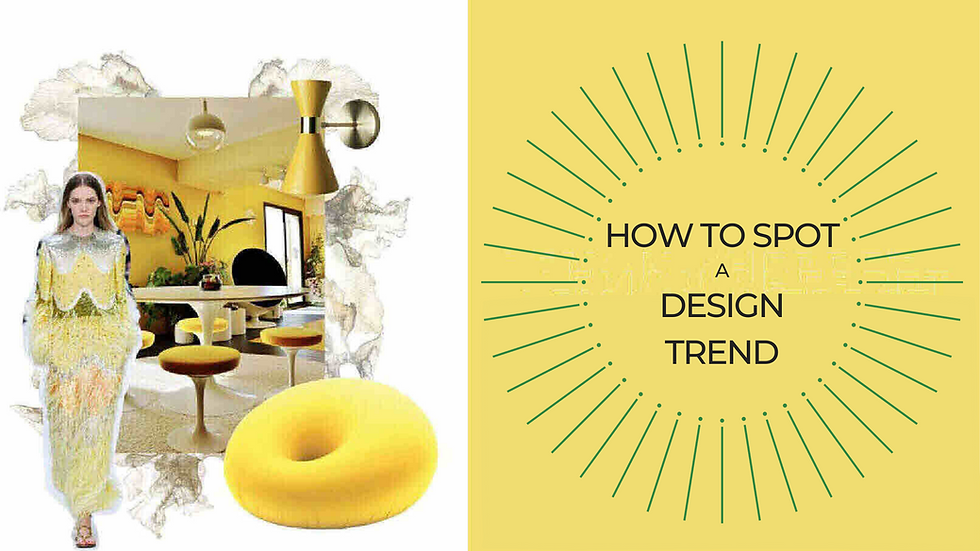The Psychology Of Colour
- Allen Interiors Inc.

- May 27, 2020
- 3 min read

Did you know that when you select a colour for your home it is a process much larger that just picking a colour that you “like”?
As human beings many of us are not always aware that we respond to colour on at least three different levels. Here are some examples of the different ways that we respond to the colour that surrounds us:

Physiological Response
As an example, some people have been known to react to a certain colours or intensity of a colours with a migraine headache. There are even terms we use such as “I’m feeling green.” that we use in our every day language that link our physiological connection to colour. We have found that body temperature of someone in a red room can be raised by as much as 3 degrees Fahrenheit over a person in a blue room.
Just mention the word peach or avocado and I usually will see a scrunching up of the nose. It’s like we still have some sort of awful flash back to the 70’s and 80’s at the mere mention of these colours. Just as a sight and sounds can, looking at a colour can elicit a number of responses both positive and negative. They can often evoke a fond memory from our childhood or the memory of a loved one.

Emotional Response To Colour
Much like the psychological response, we also respond to colour on an emotional level. How often do you hear someone say “Blue is my favorite colour!” You may think of a loved one when you see a special colour, or don’t you feel especially glamorous when you slip into that “little black dress”? Those are the type of emotional responses that we can have to a colour.
Has Our Perception of Colour Changed Over Time?
I have looked back in my archives and have found a few notes on the psychology of colour that I would like to share with you. I first used these definitions when I was teaching the psychology of colour class in the early 90’s. Although these notes date back a ways, it is interesting to note that these definitions still ring true for each and every one of these colours. Really, not much has changed with the way that we interpret how we respond on all levels, as we move around the colour wheel and take a look at each of the individual colours. Enjoy this flash back!
~~~~~~~~~~~~~~~~~~~~~~~~~~~
Psychology Of Colour – Circa Late 90’s

Men, would you buy red lingerie for your partner? Women, would you wear RED lingerie? At least a few of you will answer yes to these questions. Why?.. because RED is a ‘touch me’ colour. It is used for buttons and knobs and to attract attention. RED is also a highly emotional colour. It evokes love, lust, courage and impulsiveness. Colour and its related responses may affect how you choose colours for your home. RED in your dining room stimulates appetite and conversation, two important ingredients for a successful dinner party.
You might consider PINK for your bathroom. It is a warm colour, its reflective qualities gives everyone’s skin a healthy glow. Sexist though it might sound, PINK is a favorite colour for a little girls’ bedroom because it is associated with sweetness and innocence.
YELLOW makes us think of sunshine and warm places. Use it anywhere in your home. For those few who like YELLOW, but may be bothered by it over a long period of time, consider it in less used rooms such as halls a living room or perhaps a dining rooms.
GREEN provides an atmosphere of rest and relaxation. It is great for family rooms and dens where we spend long periods of time. The darker the GREEN, the more restful you will feel.
BLUE, with is a more popular colour than most other colours and evokes trust and dependability. Painting children’s rooms blue will provide them with a sense of security.
Sleep in the buff between PURPLE sheets and you will sleep well. It has & quieting effect and is absorbed through the skin. PURPLE is also a regal colour with high impact and style. It is a colour to use in formal living room or a vestibule.
Less intense, but closely related to purple is VIOLET. It gives a sense of romance and can fire the imagination.
BLACK although associated with death and mourning is now considered a very sophisticated and elegant colour. Great for accenting in any room and is good in any room where art work is to be displayed as BLACK provides a neutral background.
WHITE suggest purity and cleanliness.
BROWN is associated with the warm comforts of home……. home-made soup, brown bread and a cozy hearth.
ORANGE is associated with boldness, exuberance and creativity.
~~~~~~~~~~
I hope you have enjoyed learning yet another side to everyone’s favorite topic …. colour.
You now have a few fascinating facts to impress your dinner guests with this weekend.
In a world full of beauty….
Gail K Allen
Interior Design Consultant
#emotionalresponsetocolour #purple #violet #blue #physiologicalresponsetocolour #orange #Colour #green #psychologicalresponsetocolor #black #yellow #brown #physiologicalresponsetocolor #pink #psychologicalresponsetocolour #Color #white #emotionalresponsetocolor #psychologyofcolor #red #psychologyofcolour











Comments